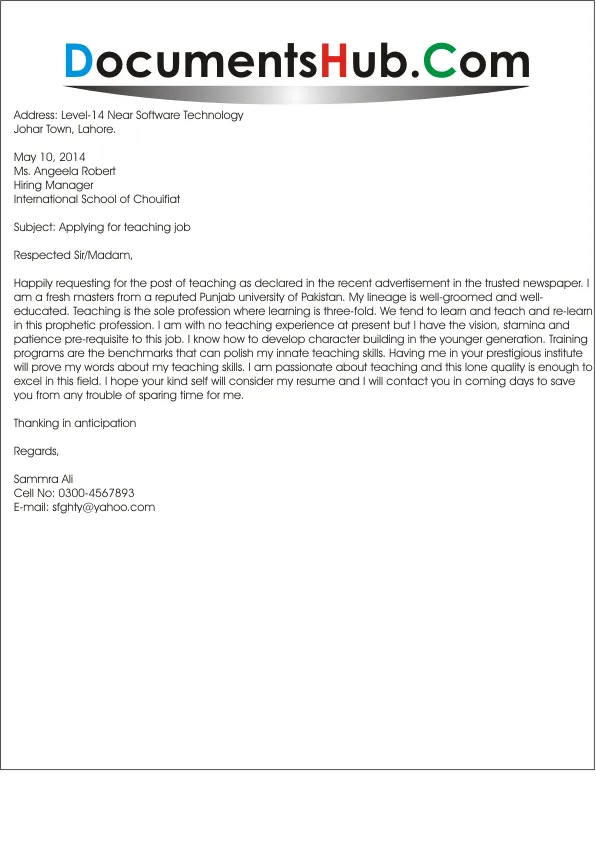Crafting Your Cover Letter: The Teacher Assistant’s First Step
Embarking on the journey to become a teacher assistant can be both exciting and challenging, especially when you’re starting with no prior experience. A well-crafted cover letter is your first and often most crucial step in securing your desired position. It’s your opportunity to make a strong first impression, showcase your potential, and highlight why you’re the ideal candidate, even without a traditional background in education. This guide will walk you through the essential elements of creating a compelling cover letter that grabs the attention of hiring managers and sets you apart from the competition. Remember, your cover letter is not just a formality; it’s a powerful tool that can significantly boost your chances of landing an interview and ultimately, the job.
Understanding the Role of a Teacher Assistant
Before you begin writing, understanding the responsibilities of a teacher assistant is key. Teacher assistants play a vital role in supporting educators and fostering a positive learning environment for students. They often assist with classroom management, lesson preparation, student supervision, and providing individualized support to students. Their responsibilities can vary depending on the school, grade level, and specific needs of the students. By understanding these responsibilities, you can tailor your cover letter to demonstrate how your skills and experiences align with the requirements of the role and how you can contribute to the school’s educational goals. This insight allows you to present yourself as a valuable asset to the team.
Essential Skills for Teacher Assistants
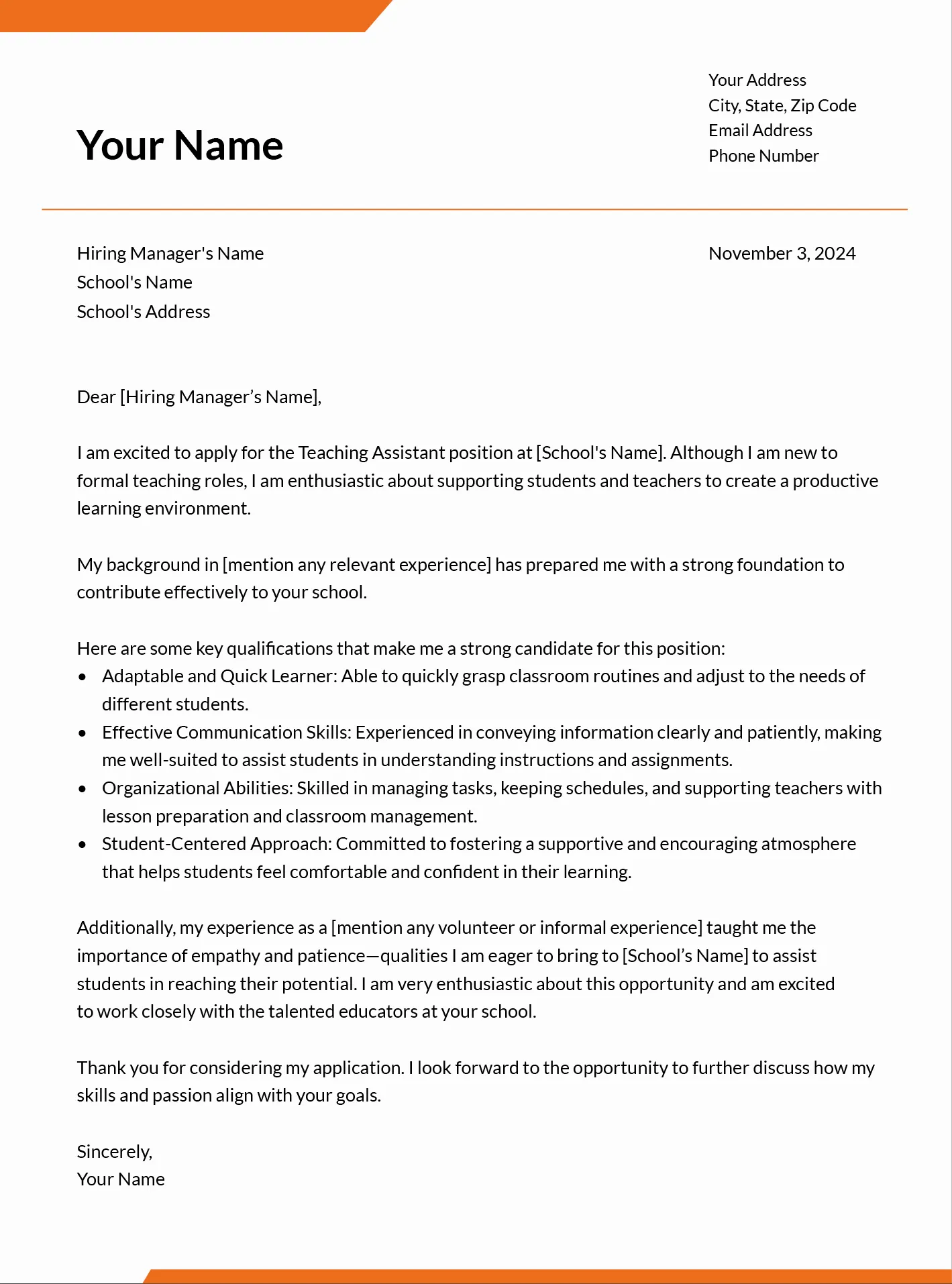
While prior experience in education may be lacking, many transferable skills are highly valued in teacher assistants. These include strong communication skills, both written and verbal, which are crucial for interacting with students, teachers, and parents. Patience and empathy are essential for creating a supportive and understanding learning environment. Organization and time management skills are necessary for assisting with classroom tasks and managing student activities. Adaptability and a willingness to learn are also important, as you’ll likely encounter diverse situations and need to adjust your approach accordingly. Highlighting these skills, along with any experience you have in areas like childcare, tutoring, or volunteer work, can significantly strengthen your cover letter.
How to Highlight Transferable Skills
Even without direct experience as a teacher assistant, you likely possess skills that are highly transferable. Think about your past experiences in different contexts, such as volunteer work, part-time jobs, or extracurricular activities. For example, if you’ve worked as a camp counselor, highlight how you managed a group of children, resolved conflicts, and created engaging activities. If you’ve volunteered at a community center, emphasize your ability to work with diverse groups of people, your communication skills, and your commitment to helping others. Quantify your achievements whenever possible; instead of saying you ‘helped with activities,’ mention how you ‘organized and led activities for 20+ children.’ This approach demonstrates your abilities in a clear and compelling way, making your cover letter stand out.
Structuring Your Cover Letter for Impact
The structure of your cover letter is critical for making a positive impression. It should be well-organized, easy to read, and tailored to the specific job you’re applying for. A standard cover letter typically includes a header with your contact information, a formal salutation, an introductory paragraph, body paragraphs showcasing your skills and experiences, a closing paragraph with a call to action, and a professional closing. Each section should serve a specific purpose, and the overall tone should be enthusiastic, professional, and clearly communicate your interest in the position. Proper formatting, including appropriate font size and spacing, also contributes to readability and professionalism.
Header and Contact Information
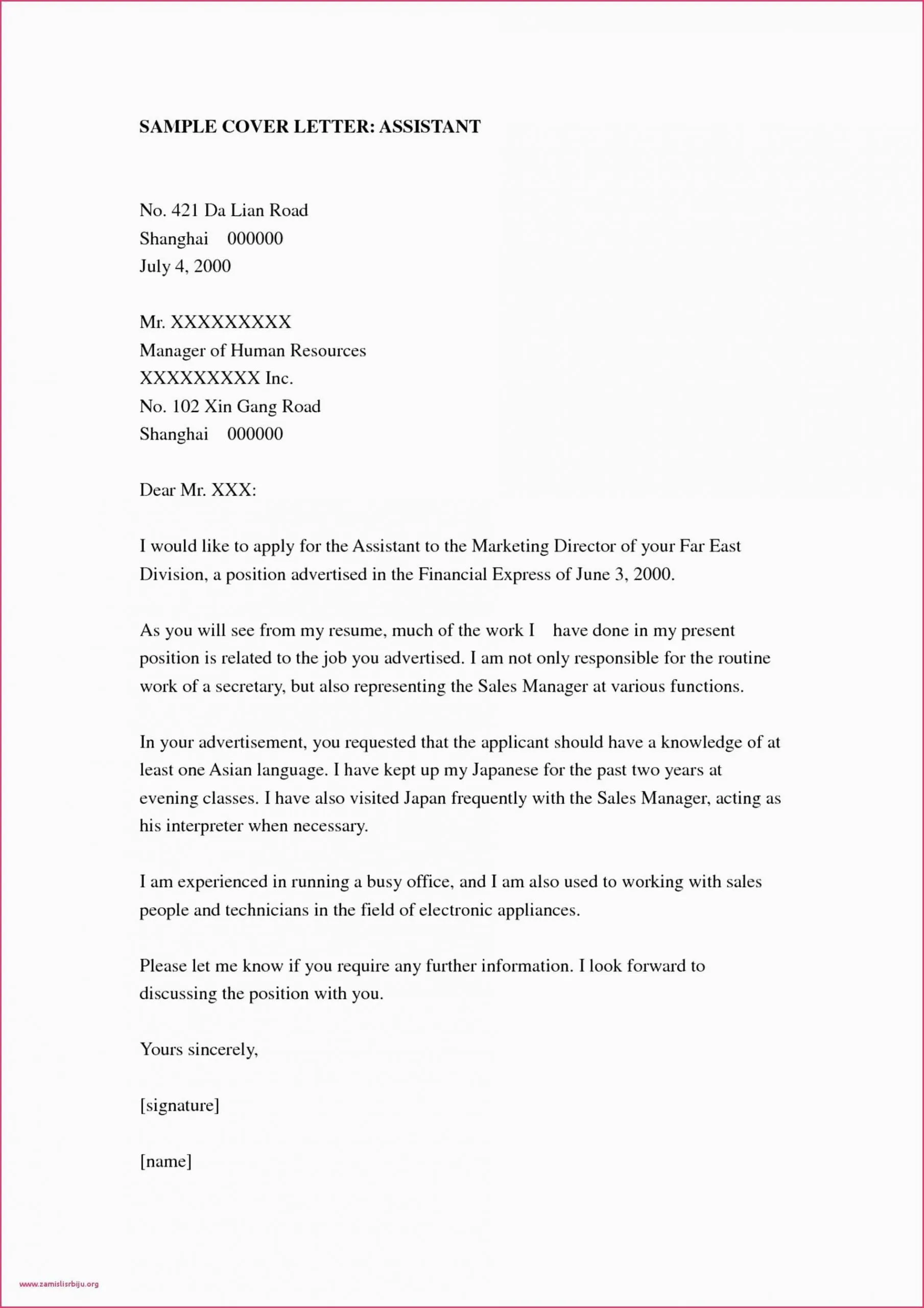
Your header should include your full name, address, phone number, and email address. Ensure your email address is professional; avoid using nicknames or informal language. The date and the hiring manager’s name (if known) and address should follow. This section establishes your identity and provides the necessary contact information for the hiring manager to reach you. Accuracy and professionalism in this section are paramount, as they set the tone for the rest of your letter. If you are applying online, make sure your contact information is easily accessible and up-to-date.
The Opening Paragraph: Grabbing Attention
Your opening paragraph is your opportunity to immediately capture the reader’s attention. Start with a strong statement that clearly states the position you’re applying for and where you found the job posting. Briefly mention why you’re interested in the role and the school. Avoid generic opening lines; instead, aim for a personalized and enthusiastic tone. For example, you could start by expressing your excitement about the opportunity to contribute to a positive learning environment and mentioning something specific that attracted you to the school’s mission or values. This opening sets the stage for the rest of your letter and makes a positive first impression.
Body Paragraphs: Showcasing Your Value
The body paragraphs are where you showcase your skills and experiences and explain why you’re a great fit for the role. Instead of simply listing your skills, provide specific examples of how you’ve demonstrated those skills in the past. Use the STAR method (Situation, Task, Action, Result) to describe your experiences: outline the situation, the task you were assigned, the actions you took, and the results you achieved. This method provides a clear and compelling narrative of your capabilities. Tailor your examples to match the requirements of the job description; if the job emphasizes classroom management, provide an example of your ability to maintain order and engage students.
Highlighting Relevant Experiences
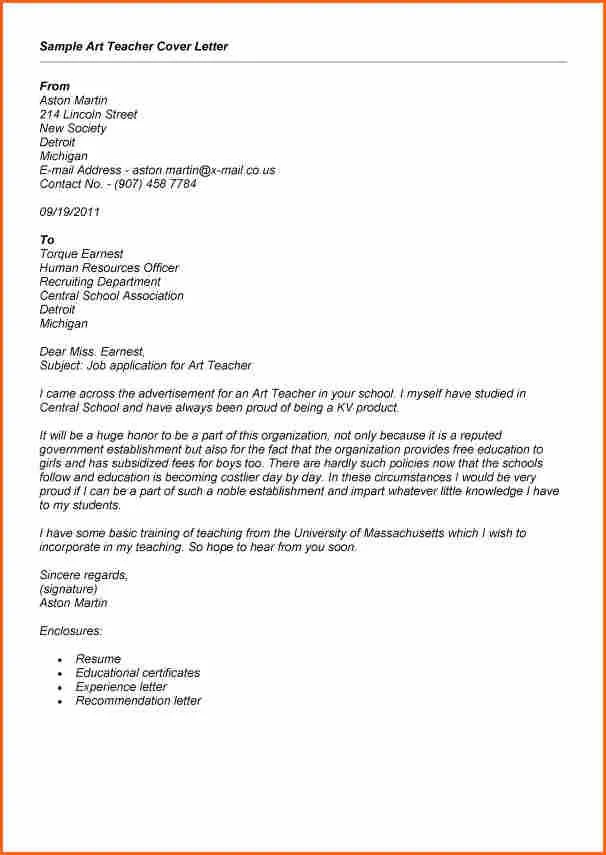
Even without direct experience as a teacher assistant, you likely have experiences that are relevant. Consider any roles where you’ve worked with children, assisted in a team setting, or demonstrated organizational skills. Examples include volunteering at a daycare, tutoring younger students, or assisting with administrative tasks. Clearly explain the context of each experience and the skills you developed. For instance, if you volunteered at a summer camp, explain how you supervised children, planned activities, and resolved conflicts. Demonstrate how your experiences align with the requirements of the teacher assistant role and how your skills will benefit the school. Use action verbs and quantify your accomplishments whenever possible.
Emphasizing Your Passion for Education
Showcasing your passion for education is crucial. Express your enthusiasm for working with children, supporting their learning, and contributing to their development. Mention any personal experiences that have fueled your interest in education, such as tutoring a sibling or volunteering in a classroom. Demonstrate your understanding of the teacher assistant’s role in creating a positive learning environment and supporting the teacher. Highlight your commitment to helping students succeed and your desire to contribute to their educational journey. This passion can set you apart from other candidates and demonstrate your genuine interest in the position.
The Closing Paragraph: A Call to Action
Your closing paragraph should reiterate your interest in the position and thank the hiring manager for their time and consideration. End with a clear call to action, such as requesting an interview. Be confident and enthusiastic in your closing; for example, state that you’re eager to discuss your qualifications further and are available for an interview at their earliest convenience. Reiterate your contact information and express your appreciation for their time. A strong closing leaves a lasting positive impression and encourages the hiring manager to take the next step in the hiring process.
Proofreading and Editing Your Cover Letter
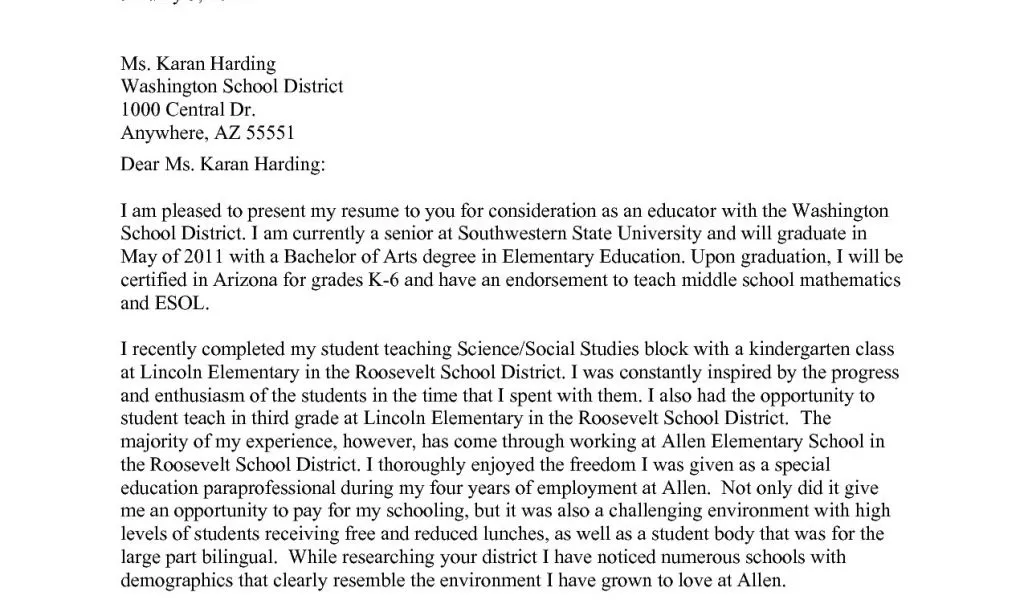
Proofreading and editing your cover letter is a critical step that ensures your professionalism and attention to detail. Carefully review your cover letter for any grammatical errors, spelling mistakes, or typos. Use a grammar checker to catch any errors you might miss. Ensure the tone of your letter is professional and that your language is clear and concise. Read the cover letter aloud to identify any awkward phrasing or sentences. The goal is to present a polished and error-free document. A well-proofread cover letter demonstrates your attention to detail and commitment to quality. Consider asking a friend or family member to review it for any mistakes you might have missed.
Common Mistakes to Avoid
Several common mistakes can undermine your cover letter. Avoid generic or impersonal openings; instead, personalize your letter to the specific job and school. Don’t simply restate your resume; instead, provide detailed examples and stories that highlight your skills and experiences. Avoid using jargon or overly complex language; keep your language clear and easy to understand. Do not include negative information or criticize past employers. Do not exceed one page in length. Ensure your cover letter is free of errors and tailored to the specific job. A well-crafted cover letter avoids these pitfalls and presents you in the best possible light.
Seeking Feedback and Refinement
Before submitting your cover letter, seek feedback from trusted sources. Ask friends, family members, or career advisors to review your letter and provide constructive criticism. They can offer a fresh perspective and identify any areas for improvement. Consider having them assess your letter for clarity, tone, grammar, and overall impact. Revise your cover letter based on the feedback you receive. Multiple revisions and feedback sessions can significantly improve the quality and effectiveness of your cover letter. This process allows you to refine your message and make it as compelling as possible, increasing your chances of landing an interview and securing the teacher assistant position.
